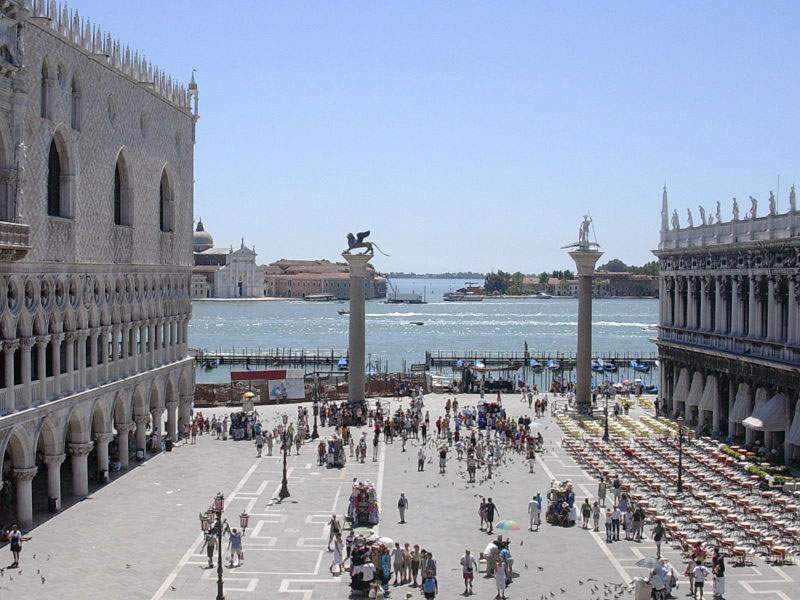Venice, city tracks tourists' movements to prevent overtourism
A system for tracking the movements of tourists is in place in Venice to prevent problems related toovertourism. This is what the New York Times explained on Monday. The mayor of Venice, Luigi Brugnaro, “is taking mass control to another level,” reads the piece signed by Emma Bubola, “pushing for hi-tech solutions that also alarm many of those who have long campaigned for a ’Venice for Venetians.’ City administrators are capturing cell phone data from unwitting tourists and using hundreds of surveillance cameras to monitor visitors and prevent crowding.”
According to the article, which also discusses turnstiles that will be installed in 2022 to control access to the lagoon capital’s historic center, the goal of this control system is to create a more livable city. “Either we are pragmatic, or we live in a fairy tale world,” Paolo Bettio, director of Venis Spa Venezia Informatica e Sistemi, the subsidiary that manages the city’s information systems, told the U.S. newspaper. However, the article also reports the views of those who see this control system as an intrusive and dystopian tool. “It’s like declaring once and for all that Venice is not a city, but a museum,” photographer Giorgio Santuzzo, who lives and works in the city, told the reporter.
The camera system, according to the article, is designed to collect data such as people’s age, gender, country of origin, and places visited.This is the surveillance system that was initially installed to fight crime in the city, but now it also works to monitor movement for tourists in order to understand where the flows are concentrated, where people are crowded the most, and consequently what actions to take to mitigate crowding. “We can know minute by minute how many people are passing through and where they are going,” said Simone Venturini, tourism councilor. “We have total control of the city.” The administration, the article also says, “says the cell phone geolocation data will also be used to prevent the city from filling up with the crowds that make crossing Venice’s most famous bridges a daily struggle. In addition, efforts are being made to find a method of figuring out how many hit-and-run visitors are spending little time (and little money) in Venice. When the administration has these methods in place, the information will be used to guide the use of turnstiles and reservation systems. If large crowds are expected on certain days, the system will suggest alternative routes or other dates. In addition, a mark-up will be applied to the entrance ticket, up to 10 euros, on days with the highest traffic.”
The issue of privacy remains, but according to the article, the issue is resolved by the fact that the data are collected anonymously, thanks to an agreement with TIM. “It cannot be used to track people on an individual level,” the administrators point out. “We all leave tracks,” says Marco Bettini, manager of Venis, “and even if you don’t report it, your phone operator also knows where you sleep. And it also knows where you work, where you are on a given day, and whether the place you are in is your city or not. There are ethical issues, however, raised in the article by data manager Luca Corsato: in fact, users may have no idea that the data released from their cell phones is purchased by a municipality. And if there are cities that make use of tracking systems to monitor crowds at specific events, Corsato points out, there are probably no other cities that make use of these systems on such a massive and constant basis to monitor tourists. ”It is true that Venice is under attack,“ he explains, ”but to give the idea that everyone who enters is tagged and rounded up is dangerous."
 |
| Venice, city tracks tourists' movements to prevent overtourism |
Warning: the translation into English of the original Italian article was created using automatic tools. We undertake to review all articles, but we do not guarantee the total absence of inaccuracies in the translation due to the program. You can find the original by clicking on the ITA button. If you find any mistake,please contact us.




























